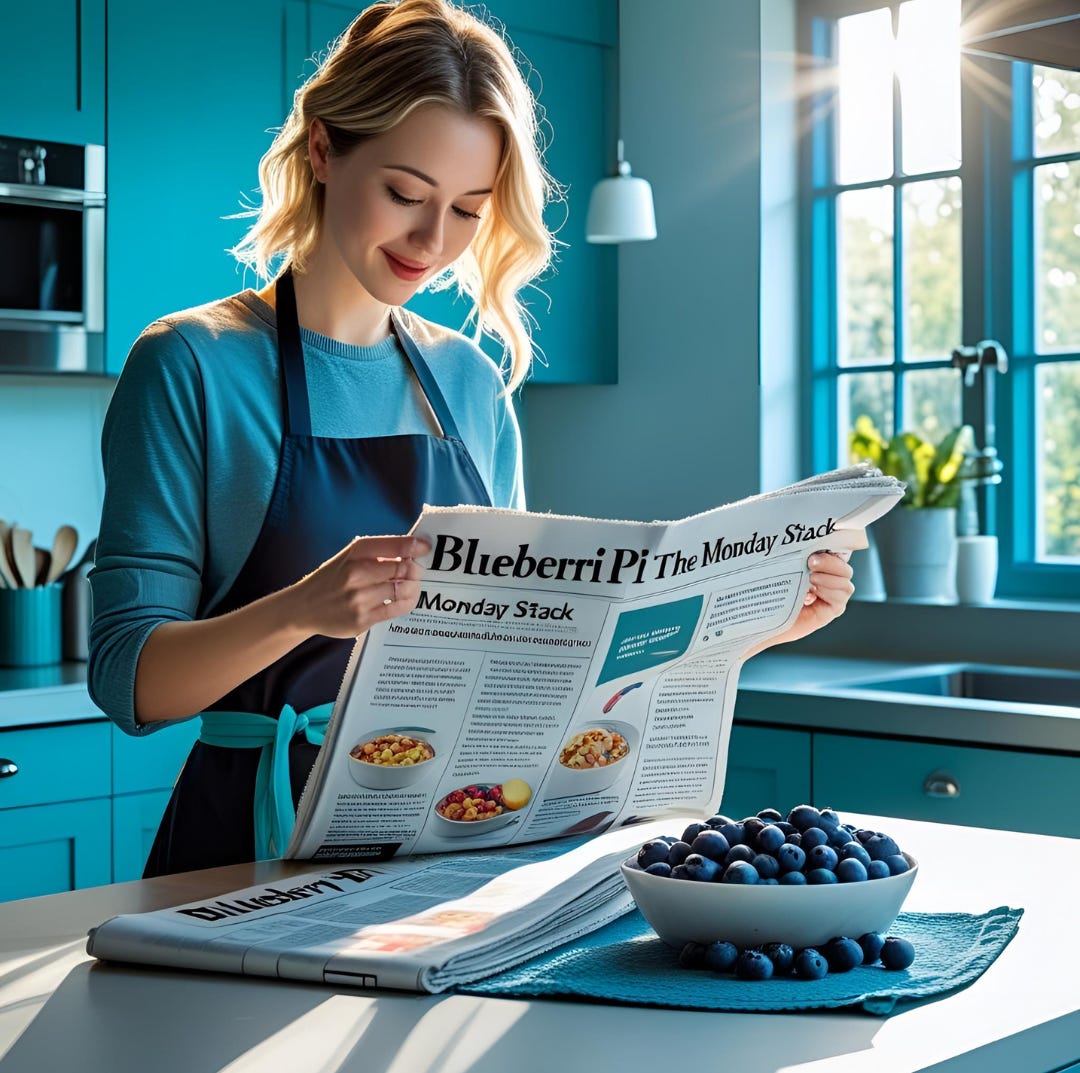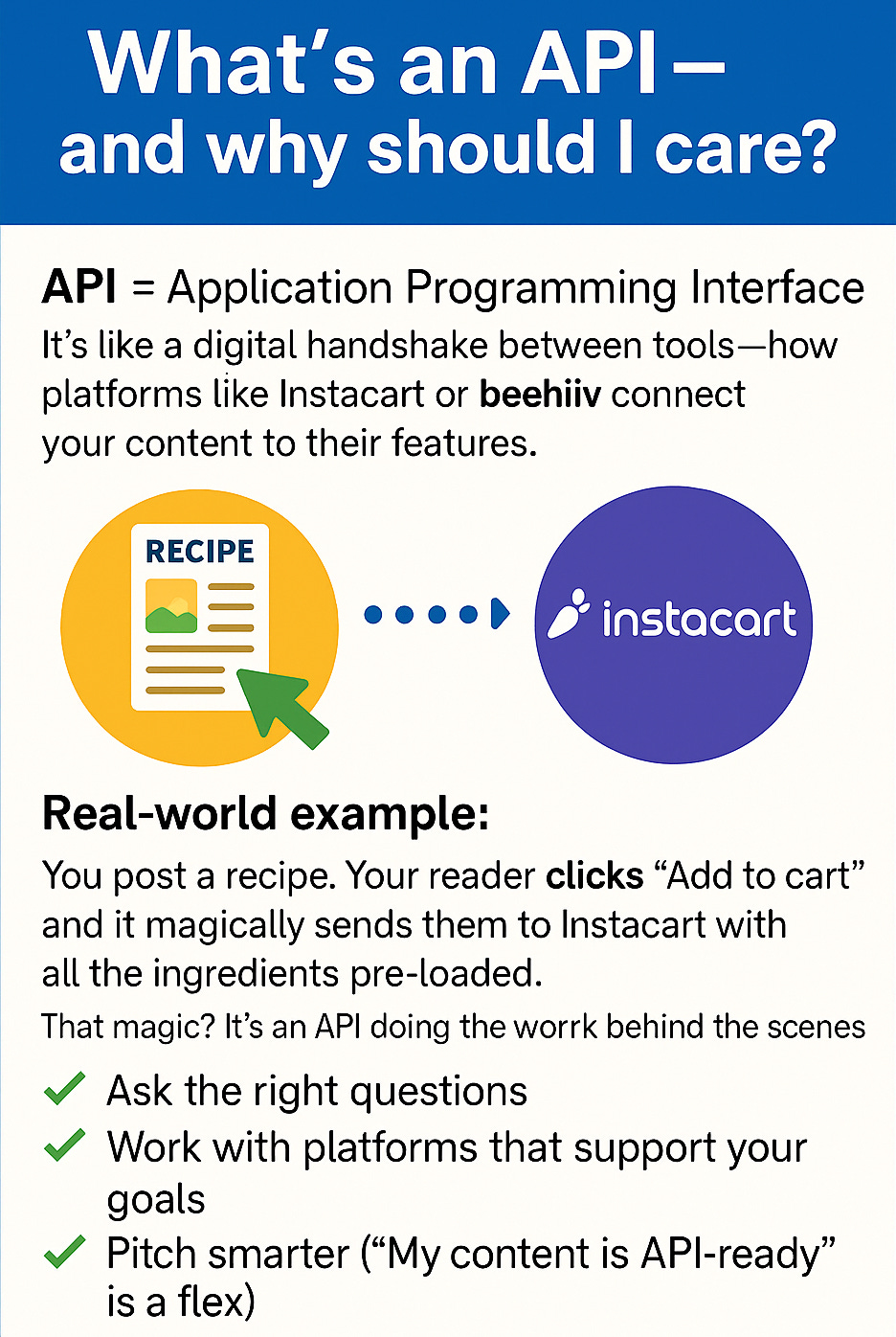Introducing: The Monday Stack
AI hits the kitchen + licensing leads for creators
Hey Blueberri Insiders,
Let’s kick off your week with what’s moving across the food-tech world and what it means for your content.
This Monday Stack is a brand new weekly issue where we go beyond the trends and into the opportunities: recipe platforms dropping new tools, AI reshaping what “content-ready” even means, and brands that might just be your next licensing partner.
Every headline here is a breadcrumb toward better discoverability, smarter monetization, or a new revenue stream. You just have to know what to stack.
Here’s a free preview of what’s inside.

This Week’s Big Signal
Applebee’s & IHOP Launch AI Across Franchises
Dine Brands is piloting AI-powered ordering tablets, auto table-clearing cameras, and menu personalization in 300+ locations.
Why it matters for food creators:
This is a shift from analog to automation. Platforms will increasingly expect your recipes and content to be modular, structured, and ready for integration.
To read the full Monday Stack, including 4 PR leads, a licensing playbook tip, and how creators are adapting, become a Blueberri Insider.
Platform to Watch
Yuka: The App Forcing Brands to Reformulate
With 23 million U.S. users, Yuka ranks food products by health score. Chobani and Campbell’s have already changed their products in response.
Why it matters for bloggers:
Capitalize on this shift with Yuka-friendly recipe guides, product partnerships, or affiliate-based wellness content.
The Monday Stack continues below for Blueberri Insiders
Licensing Insight
Shiru’s AI Ingredient Licensing Platform
Shiru’s “Flourish” platform uses AI to generate novel ingredients and licenses them to manufacturers.
Takeaway:
This is your proof of concept—structured recipe content can be licensed too, especially when formatted for adaptability.
Platform Moves You Should Actually Care About
beehiiv: API v2 Is Live
What this means:
beehiiv (a newsletter platform like Substack) now allows you to automate more of your newsletter flow. You can tag subscribers, send custom emails based on actions, and even plug beehiiv into tools like Notion or Airtable.
Why this matters for food bloggers:
This isn’t just tech talk, it’s powerful content strategy. Thanks to the API, you can automate a 5-day recipe series when someone subscribes, segment readers based on whether they clicked “meal prep” or “dessert,” and even offer subscriber-only recipe bundles, all without juggling multiple platforms. It’s about making your newsletter work harder for your business.
Key capabilities include:
Adding or updating subscribers (with custom tags like “gluten‑free”)
Pulling campaign metrics to see what’s clicked most
Connecting with tools like Zapier or Make for automations like “Tag + send guide”
beehiiv explains its API and integrations
Even if you’re not on beehiiv now, this is a sign of where email is going: personalized, intelligent, and structured.
Instacart: Public Recipe API & NYT Cooking Integration
What it means:
Instacart’s Developer Platform allows third parties (like blogs and apps) to integrate an “Add all ingredients to my cart” button. NYT Cooking has already launched this for its readers.
Why it matters for bloggers:
Seamless shopping: Readers can click once and order ingredients—no copy/paste needed.
Better conversions: This frictionless experience boosts shopping completion rates.
Affiliate potential: Instacart offers affiliate commissions for orders stemming from partner links.
Pitch advantage: Brands and platforms know this tech exists—showing you understand it positions you as future-ready.
Creator use case:
Add Instacart buttons to high-traffic recipes (e.g., "Summer Pasta Salad") so readers can shop ingredients fast.
Share early results (“We saw a 15% increase in shopping click-throughs”) to open affiliate or brand sponsorship talks.
Ask your dev team or plugin provider if they support the Instacart API, or pitch custom dev help.
NYT Cooking + Instacart announcement
Retail Dive’s explanation of Instacart’s public API
Retail Touchpoints on NYT Cooking and Instacart’s joint launch
Future Watchlist: MikMak (worth keeping on your radar)
What they do:
MikMak powers multi-retailer shoppable experiences—turning content like recipes or short-form videos into instant “add-to-cart” hubs across stores like Walmart, Target, and Instacart.
Why it might matter to you:
If you’re working with brands on sponsored content, MikMak’s platform could let you:
Embed retailer links directly into your content
Offer brands real performance insights like Cost-Per-Order, ROAS, and purchase lift
Strengthen your pitch with built-in analytics or shoppability
Use case:
You likely won’t pitch MikMak directly, but you can work with brands already using them, or frame your offerings in a way that’s MikMak-ready.
From Screen to Table: Using Shoppable Recipes to Accelerate Food & Beverage Sales
Blueberri Tip of the Week
Want to license content? Structure first.
Make sure your recipes include:
✔️ Title, servings, prep time
✔️ Clean ingredient list
✔️ Metadata (tags, variations, origin)
✔️ Optional: nutrition or brand alignment
The more structured your content, the more reusable and licenseable it becomes.
Coming Thursday on Blueberri Pi:
“The Hidden Work Behind Licensing Deals”
What creators are doing quietly to prepare their recipes for long-term partnerships and how you can too.
Thanks for being here
Every Monday, Stack is designed to help you move from reactive content to intentional strategy.
Save the ones that spark ideas. Pitch the ones that open doors.
See you Thursday,
Sandie
Your friend in food



